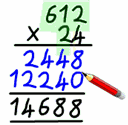
A lot of it comes down to conformational bias. When a piece of toast is dropped it lands on the group butter side down 50% of the time, it's basically a coin (arguably it could be higher, but the difference is negligible). What happens though is that for many of the times that the bread lands buttered side down you pick it up and continue on your way without really noticing. On the other hand when it lands buttered side down it sucks. You make a big deal, quote the line, and have to clean it up.

I believe it anything is over 60% people notice it as an unfair coin. So when a few of the buttered side up are ignored it seems that the bread is favouring the buttered side more.

Now that doesn't mean you can't have a streak, even a really long one. Loosing or winning. Probabilistically it could happen for someone's entire life, although the it would be extremely rare, like one person ever, it's not you, don't worry. Even if you flip a coin 100 times you'd expect to see a string of head (or tails) at least 7 long.
When these streaks happen people often think they are lucky or cursed, but their luck will eventually turn, it's all in the numbers. The thing to remember is that the probability of each instance is fixed, it has nothing to do with anything before. Even though you got a string of 15 heads in a row, the probability on the next one is still 50%.










